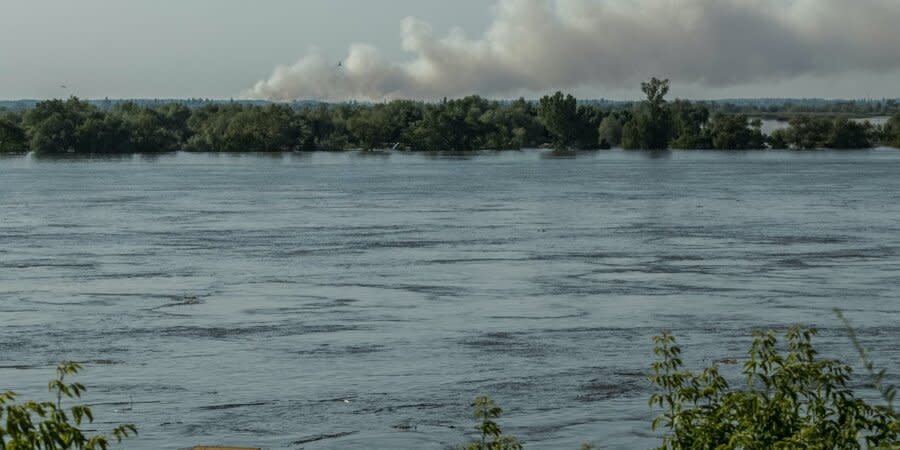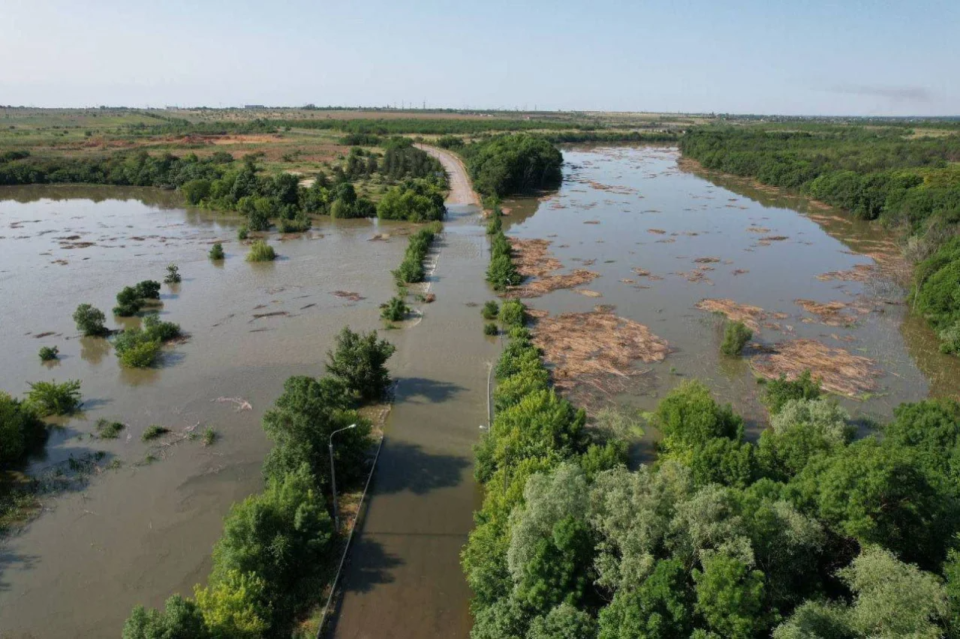Ukraine’s Agriculture Ministry describes coming damage due to dam destruction

Read also: Russian troops flood own positions by destroying dam, risk detonating landmines — Malyar
In addition, the man-made disaster will halt the water supply of 31 irrigation systems serving fields in Dnipropetrovsk, Kherson and Zaporizhzhya oblasts, the ministry noted.
In 2021, these systems provided irrigation for 584,000 hectares of farmland, from which Ukraine harvested about 4 million tons of grain and oilseeds, worth about $1.5 billion.
Read also: Ukrhydroenergo says how destruction of Kakhovka dam will affect Ukraine’s hydrosystem
Only 13 irrigation systems were operating on the right bank of the Dnipro River in 2023. According to the ministry, the deliberate destruction of the Kakhovka dam has left 94% of the irrigation systems in Kherson without a water source, along with 74% in Zaporizhzhya and 30% in Dnipropetrovsk oblasts.
“The destruction of the Kakhovka (dam) will lead to the fact that the fields in southern Ukraine next year might turn into deserts,” the ministry said.
“Not only will farmers and water users suffer without the Kakhovka reservoir, but sources of drinking water for settlements (have disappeared).”
The Agriculture Ministry noted that fisheries will also see the negative consequences of the destruction of the Kakhovka dam. In particular, mass deaths of fish, both young and adults, has already been recorded – exacerbated by the recent end of the spawning season, which will result in caviar drying up in shallow areas of the reservoir.

Additionally, the Ministry noted that fish and other fauna swept out by the flood into the floodplains below the dam will also likely perish once the floodwaters recede, since they face the risk of being stranded on land.
Another probable issue is the mass death of freshwater fish and other freshwater animals in the salt waters of the Black Sea. Black Sea fauna itself is also at risk from the massive influx of fresh water.
Losses to the fishing industry from the death of adult fish alone could reach 95,000 tons or about UAH 4 billion ($109.4 million) in total, according to preliminary calculations, while the damage from the death of all biological resources will amount to UAH 10.5 billion ($287.1 million).
These consequences are likely to persist for years, even if the bed of the Kakhovka Reservoir is filled in the near future. The restoration of the lost fish populations will be a lengthy process, Ministry officials added, due to the difficulty in restoring the bottom levels of the dam's food chain.
The Agriculture Ministry pointed out that all data has been provided only in accordance to preliminary estimates, as final conclusions can be drawn only when the water level stabilizes.
Explosion at Kakhovka HPP — what is known
Read also: Flood waters from dam break expected to rise another meter within 20 hours
Russia's troops have occupied Nova Kakhovka for more than a year. On the night of June 6, the dam was blown from the inside. The water flow from the reservoir, which was close to its highest recorded water level, has endangered over 80 towns and settlements, including the regional capital of Kherson, downstream on the Dnipro River.
The left (eastern) bank of the Dnipro River, which is under Russian occupation, is affected the most.
Ukrainian President Volodymyr Zelenskyy ordered an evacuation from the endangered areas and supply of safe drinking water to people who were supplied with water from the Kakhovka reservoir.
The Kakhovka Hydroelectric Power Plant was completely destroyed and cannot be repaired, state hydroelectric company Ukrhydroenergo said. The dam wasn't destroyed completely, but significantly damaged, the Ukrainian military’s South Operational Command said.
Around 16,000 people on the right (western) bank of the Dnipro River in Kherson Oblast are in a "critical zone” at risk of flooding according to the region’s governor, Oleksandr Prokudin.
Read also: Some 1,500 houses flooded in Kherson Oblast, bridges destroyed in Mykolayiv Oblast
The Prosecutor General's Office opened an investigation on the incident under article of the Criminal Code on ecocide.
Ukrainian President Volodymyr Zelenskyy has called Russia's attack on the Kakhovka Hydroelectric Power Plant the largest man-made environmental disaster in Europe in decades.
Ukraine’s Defense Intelligence has said that the Russian demolition of the Kakhovka Hydroelectric Power Plant increases the threat of a nuclear disaster.
Read also: Attack on Kakhovka dam is Kremlin’s response to calls for peace talks, says Ukraine’s envoy to UN
In Mykolaiv Oblast, the bridge in Yelizavetivka village had been destroyed, while the village of Halahanivka is completely flooded.
We’re bringing the voice of Ukraine to the world. Support us with a one-time donation, or become a Patron!
Read the original article on The New Voice of Ukraine

